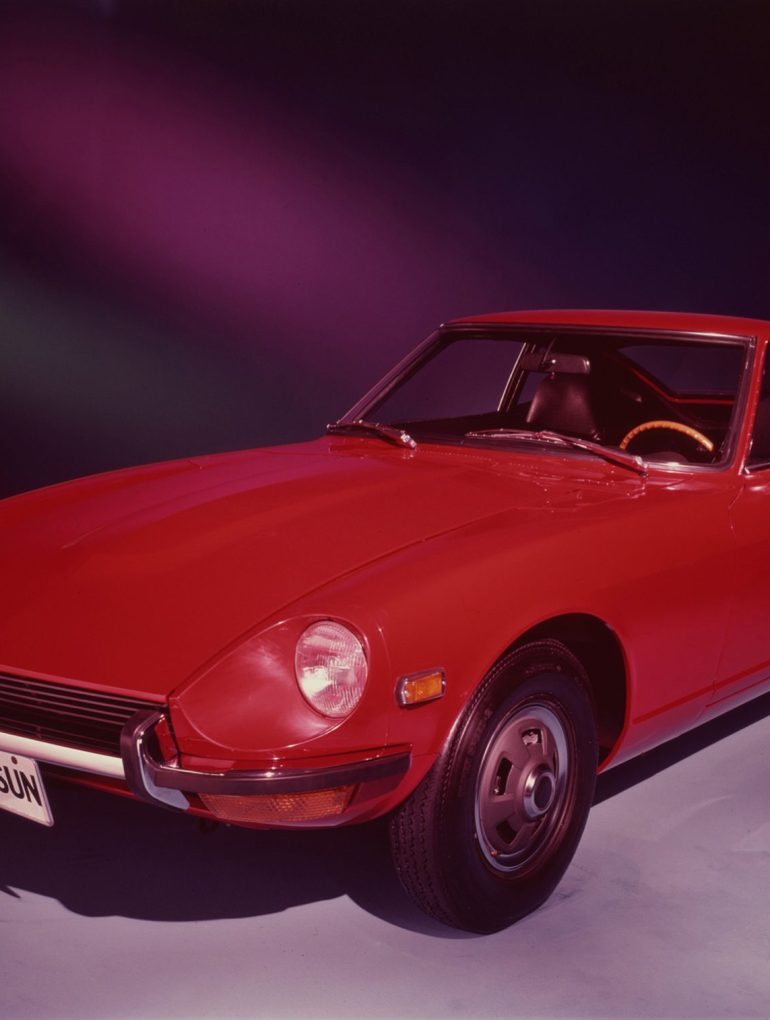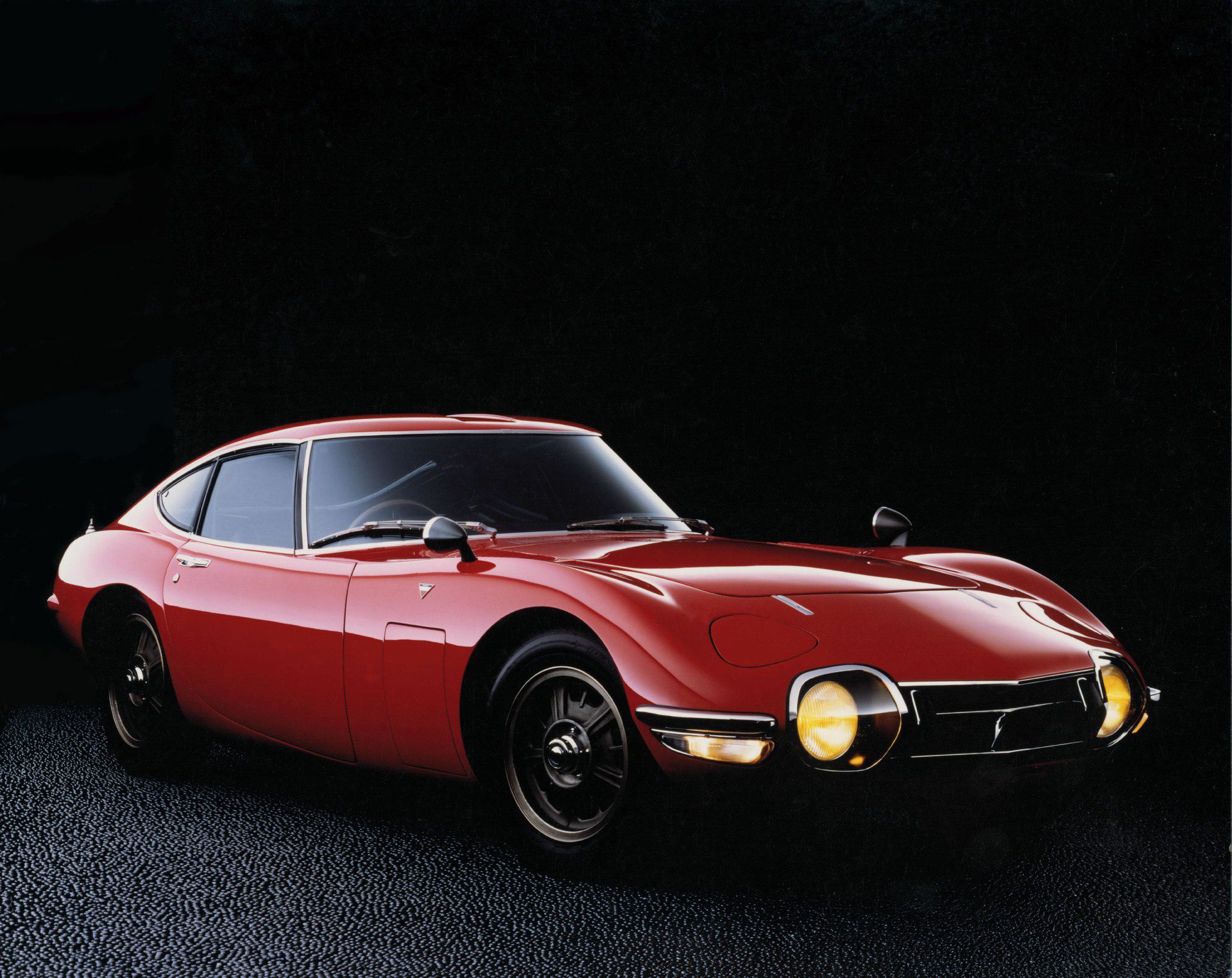Today a global leader, Japan was a late bloomer when it came to the automotive industry. Still, thanks to its global expansion during the 1970s, Japanese cars were quick to catch up and outdo the competition in various segments, sports cars included.
In the last few decades, every major Japanese brand left its mark in the sports car market by delivering cars that not only handled like a dream and sounded stunning but were also reliable, highly tunable, and affordable to a younger demographic. Needless to say, these cars also brought a different kind of beauty—clearly influenced by prevailing trends of their respective eras, but all with their own idiosyncrasies.
These ten Japanese sports cars are not all-time greats only for their not performance and clever engineering but for the shockwaves they made through the industry, shaping manufacturers, the culture and the whole automotive world.
#1: Toyota 2000GT
In the 1960s, the prospect of a high-performance Japanese automobile seemed distant, at least until Toyota made a pioneering move in the segment in 1967, creating the 2000GT. In its basic proportions, this alluring fastback echoed European styling, yet it was still unlike any other car on the planet. It was the birth of the Japanese sports car.
Being produced in just 351 copies, it was a scarce car and hardly a sales success as it wasn’t offered outside of Japan, but thanks to some movie magic, the 2000GT gave Toyota much needed global exposure. Tailor-made into a convertible for Sean Connery’s lean frame, the first Japanese sports car famously starred in the 1967 Bond movie You Only Live Twice.
Adding to the legend, this car also had a stellar racing career in Japan, competing in SCCA, where three cars were prepared by none other than Carroll Shelby. Today, Toyota 2000GT is the most valuable Japanese classic car and one of the most influential ones as well.
#2: Datsun 240Z
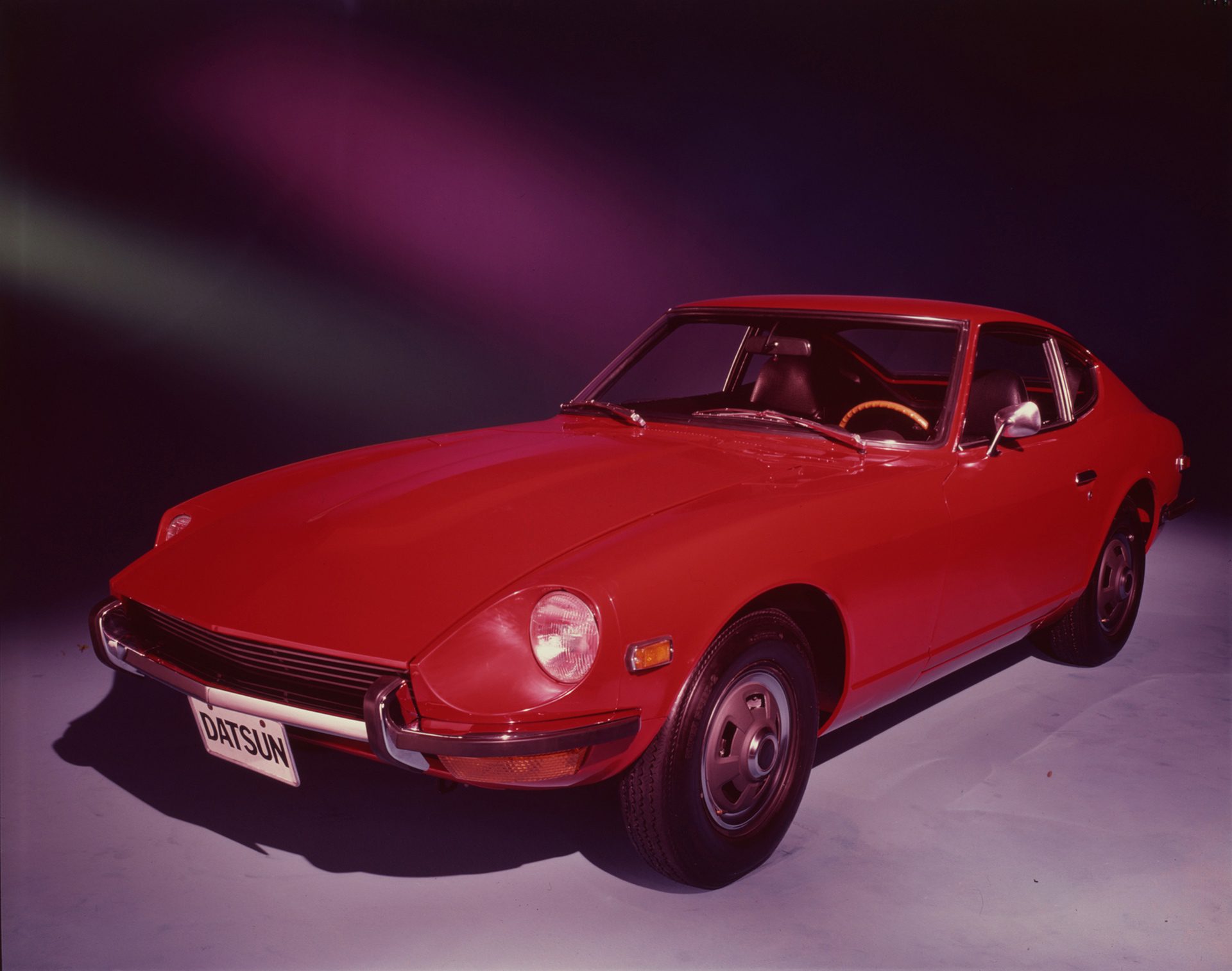
Initially known as a Fairlady Z, the Datsun 240Z was an instrumental car in shifting the global attitude towards Japanese sports cars. It was introduced to the North American market just before the oil crisis hit and it stayed there as the homegrown performance movement crumbled over financial, ecological and safety concerns. With a 2.4-liter inline-six placed in a graceful and compact body, the 240Z soon became a worthy alternative to both American and European sports cars.
Little by little, it started captivating the press and the public, becoming one of the greatest sports cars of the decade and also giving birth to the Datsun Z Series. In fact, the upcoming Nissan 400Z is a tribute to the primordial Z car rather than being a visual evolution of its predecessor, the 370Z.
This sports car’s importance transcends just the Nissan brand, as it almost single handedly awakened hunger for Japanese sports cars in North America, which gradually became the biggest export market for performance cars coming from other manufacturers as well.
#3: Mazda RX-7 FD
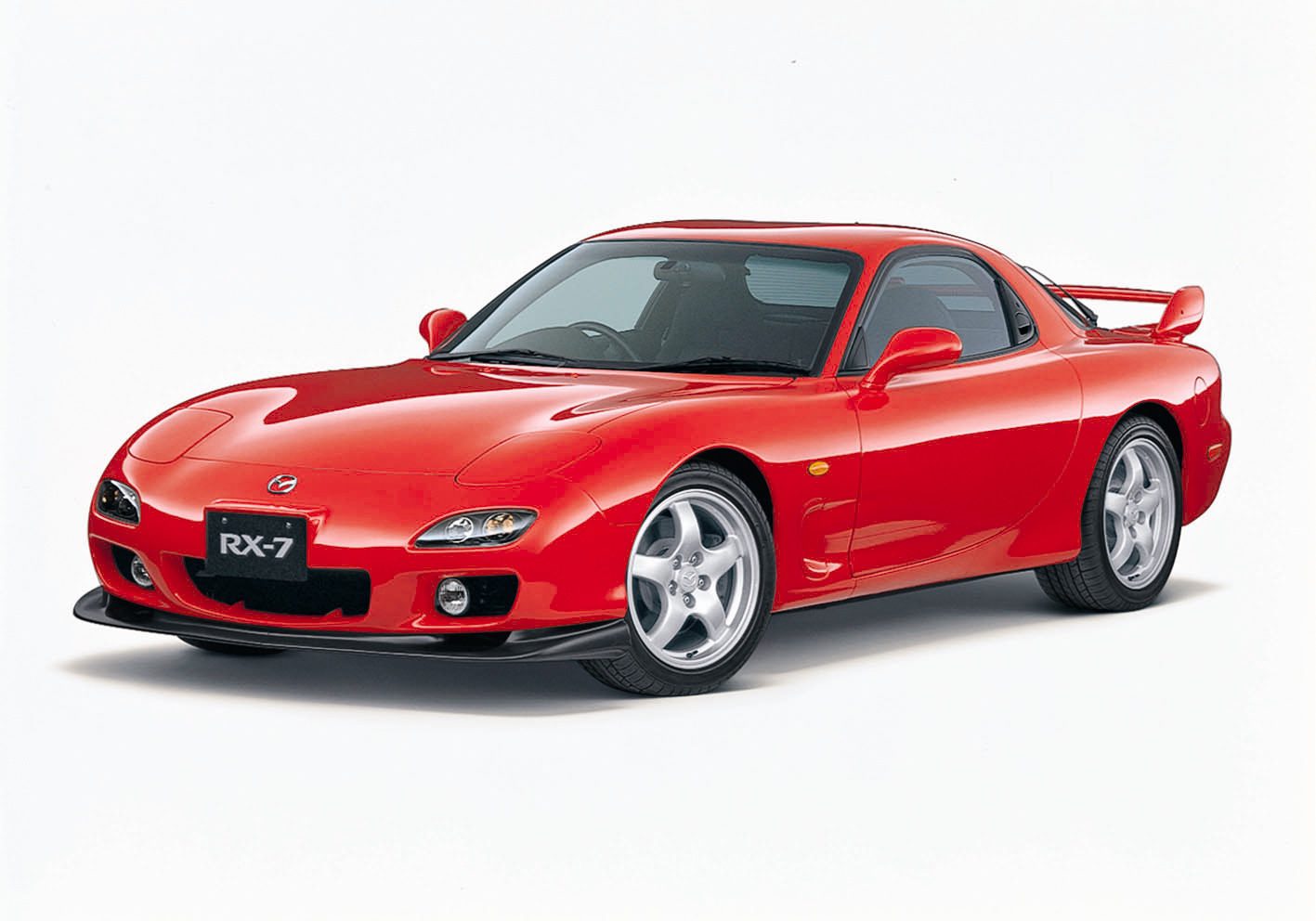
Rotary-powered Mazdas have been around since the 1960s, but not all of them ended up etched in the collective unconscious like the FD generation Mazda RX-7. In production from 1992 to 2002, this RX-7 was by far the most advanced roadgoing sports car Mazda created and arguably the most beautiful too.
The secret to RX-7 FD’s success was a 13B-REW, a sequential twin-turbocharged twin-rotor engine, an advanced setup producing up to 276 horsepower in stock form and revving up to 8,000 RPM. The striking design was just a bonus, instantly making the FD into a crowd favorite.
With Japan and Australia still being Mazda’s primary markets, the States and Europe missed out on more focused and sporty models, which in turn opened the doors to a vast aftermarket movement, launching the FD into stardom.
Twenty years after the last cars rolled off the production line, the RX-7 FD enjoys an international cult following—and rightfully so, as it’s the most memorable rotary sports car ever created.
#4: Subaru Impreza WRX STi
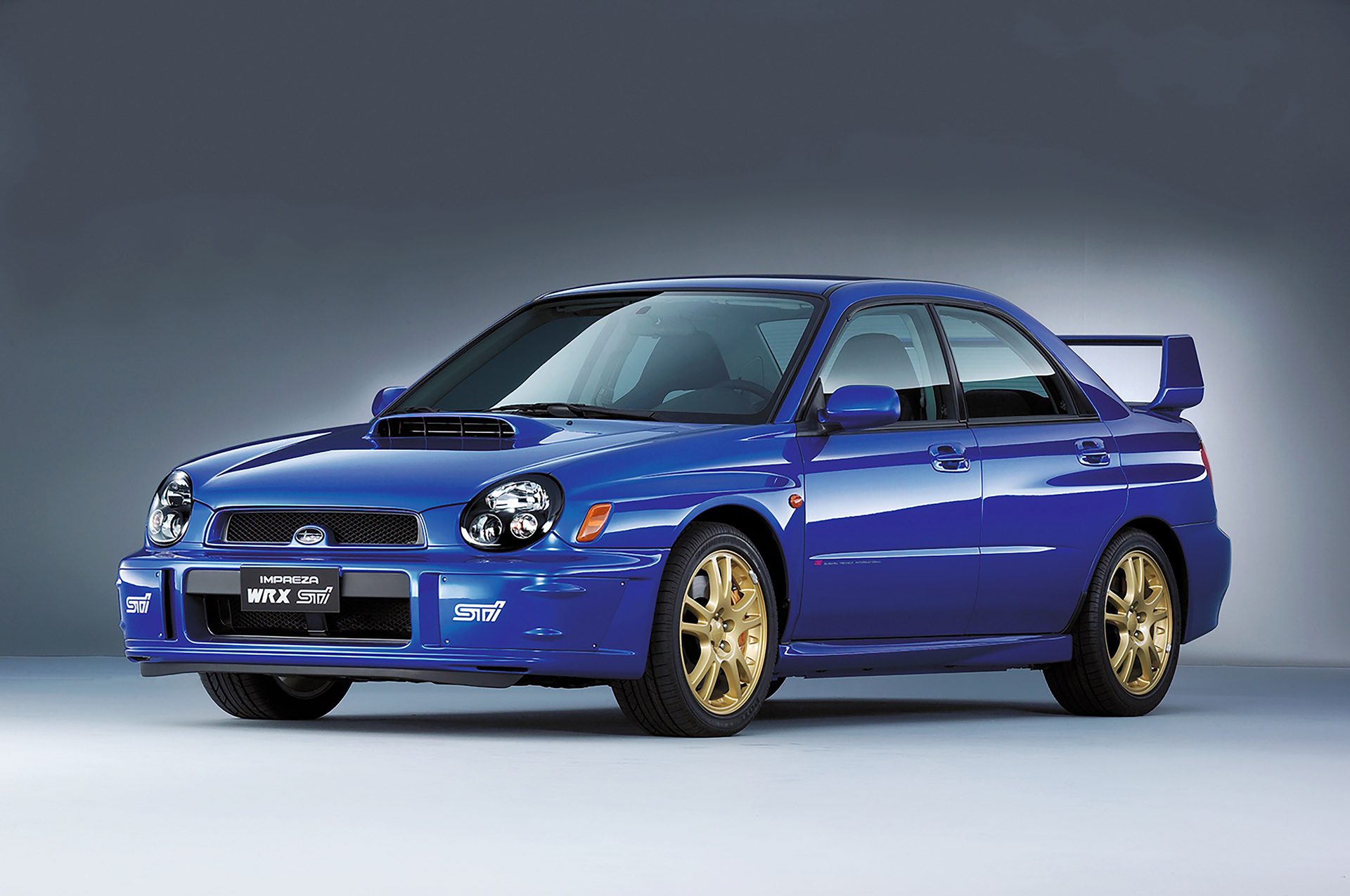
The thing with top 10 lists is that some brilliant cars just have to go—so for our love of boxer engines, the battle between the Mitsubishi Lancer EVO and the Subaru Impreza WRX STi will be in favor of the latter. Another point in favor of the WRX STi is that it’s still there on the market, unlike its arch rival in the rally-bred supersedan department.
While the Lancer EVO was a more advanced car in terms of engineering, the WRX STi has established itself as an-all star for being the more attainable option of the two. The Subaru WRX STi proved itself in the hands of many legendary racing drivers, including Richard Burns, Juha Kankkunen, Carlos Sainz, Petter Solberg and, of course, Colin McRae.
From 1993 to 2005, various Imprezas got 3 constructors’ and three drivers’ championships and a total of 46 wins, remaining in competition until 2008 when Subaru eventually withdrew from rallying. On the streets, the WRX STi has a fanatic fanbase, keeping the blue-and-gold cult alive to this day.
#5: Acura NSX
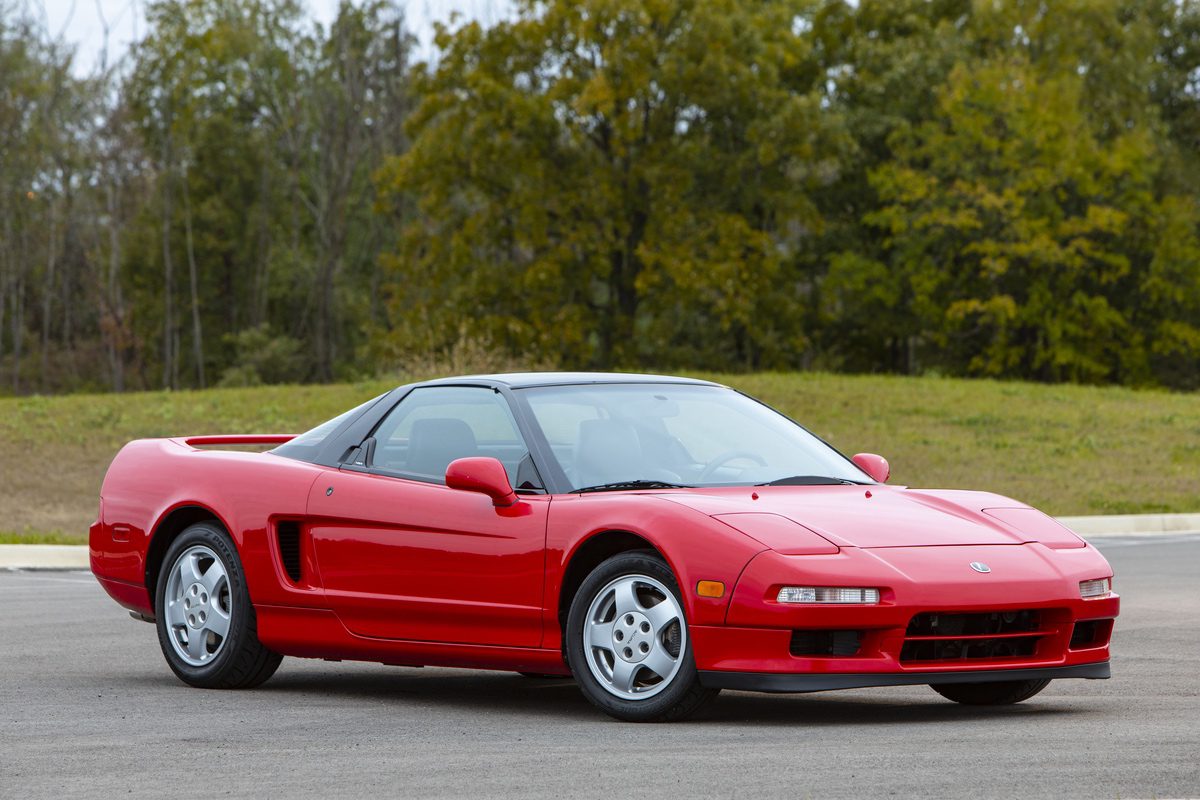
Up until the NSX came in 1990, Japanese sports cars were generally considered inferior to the top echelon of high-performance machinery, but this V6-powered mid-engined sports car begged to differ. Developed by a team of devoted engineers and perfected by Formula 1 aces Ayrton Senna and Satoru Nakajima, the Honda NSX famously gave contemporary Ferraris a good run for the money, proving that right chassis and suspension tuning and clever engineering can beat cylinder count and big exotic names.
In a way, the NSX was the people’s supercar—although it was by no means cheap. Its long production span left Honda’s engineers space to perfect it even more, with the later NSX-R examples remaining relevant even though the basic layout was in its teens. With the interest in 1990s and Y2K classics on a meteoric rise, the NSX is unsurprisingly a hot commodity, and it’s no wonder, because it is a superlative car even today.
#6: Nissan Skyline GT-R R34
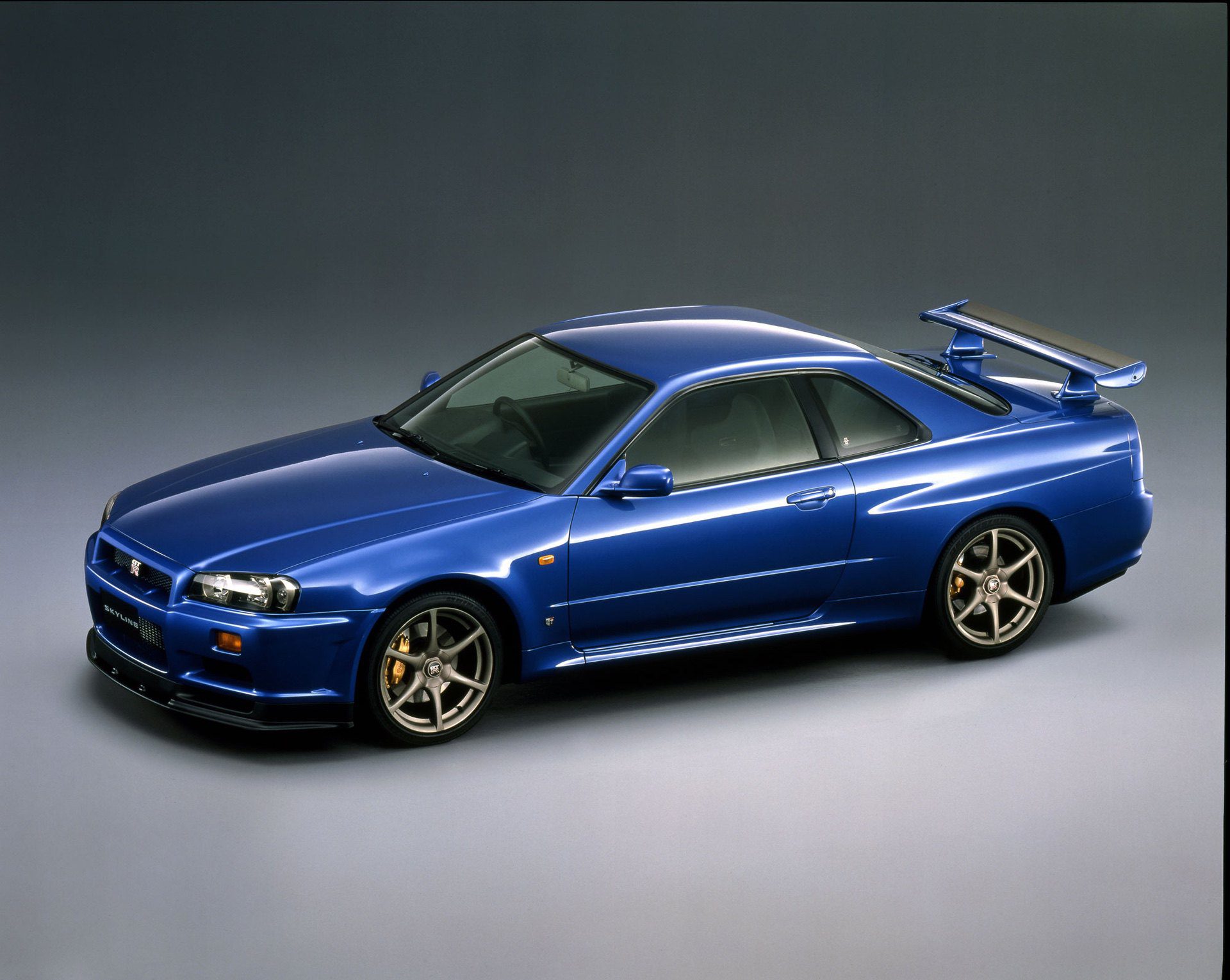
While the GT-R badge was given to flagship Nissan sports cars from the 1960s onwards, the R34 generation was the first true global icon from the Skyline series, leaving an everlasting mark in the mainstream, the underground, and everything else in between.
In the real world, it was a Le Mans contender and a street racing hero, but it was its virtual fame that also greatly contributed to its legendary status. Through the Gran Turismo and Need for Speed series, the R34 GT-R became a hero car in every American household, while the real-life Brian O’Connors took advantage of gray market imports to get their hands on the real deal too.
With its highly tunable twin-turbo straight six, all-wheel drive, and simple-yet-effective design, the R34 set a high benchmark in the golden era of neoclassical JDM movement. Its impact on 21st century pop culture only boosted its reputation, and today it is one of the most sought-after Japanese cars on the collector market.
#7: Toyota Celica
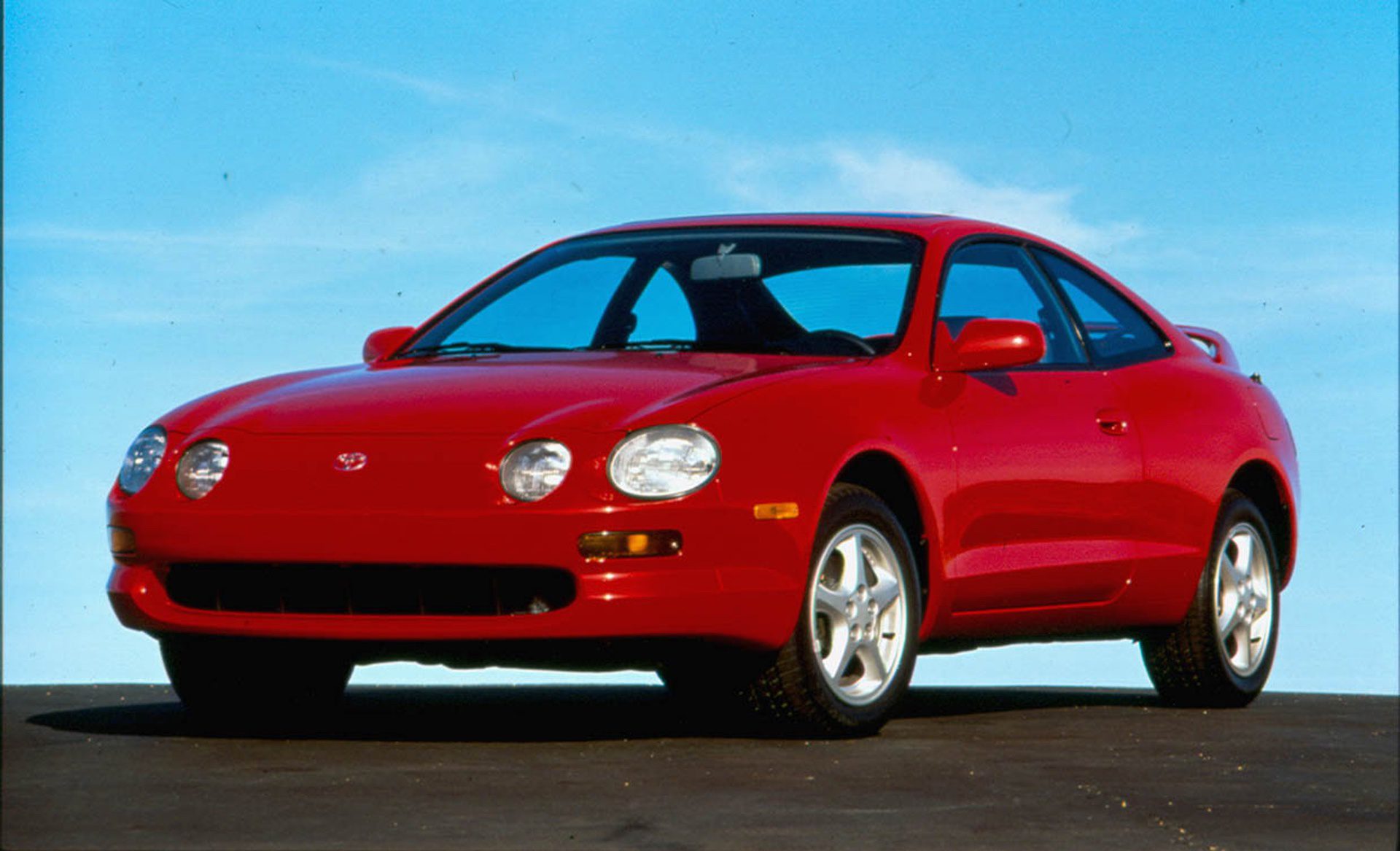
The Supra’s absence from this list is becoming increasingly apparent, and there’s a sole reason for that: the Celica. So, let us defend this somewhat controversial opinion. From the early 1970s onwards, the Celica was Toyota’s go-to sports car, and more.
In its first generation, the Celica was Toyota’s first true hit sports car aimed at the North American market. The second generation nested the Celica XX: a car that soon became the Supra, creating a legend on its own.
The third generation was all about rallying, utterly dominating the Safari Rally and Rallye Côte d’Ivoire between 1983 and 1986, and so were the next generations in Group A. Carlos Sainz, Juha Kankkunen, and Didier Auriol won a total of four driver’s titles, while Toyota itself settled for two manufacturer’s titles.
That being said, Toyota Celica stands among the most successful Japanese nameplates in motorsports, making it one of the most influential sports cars ever created.
#8: Mazda MX-5
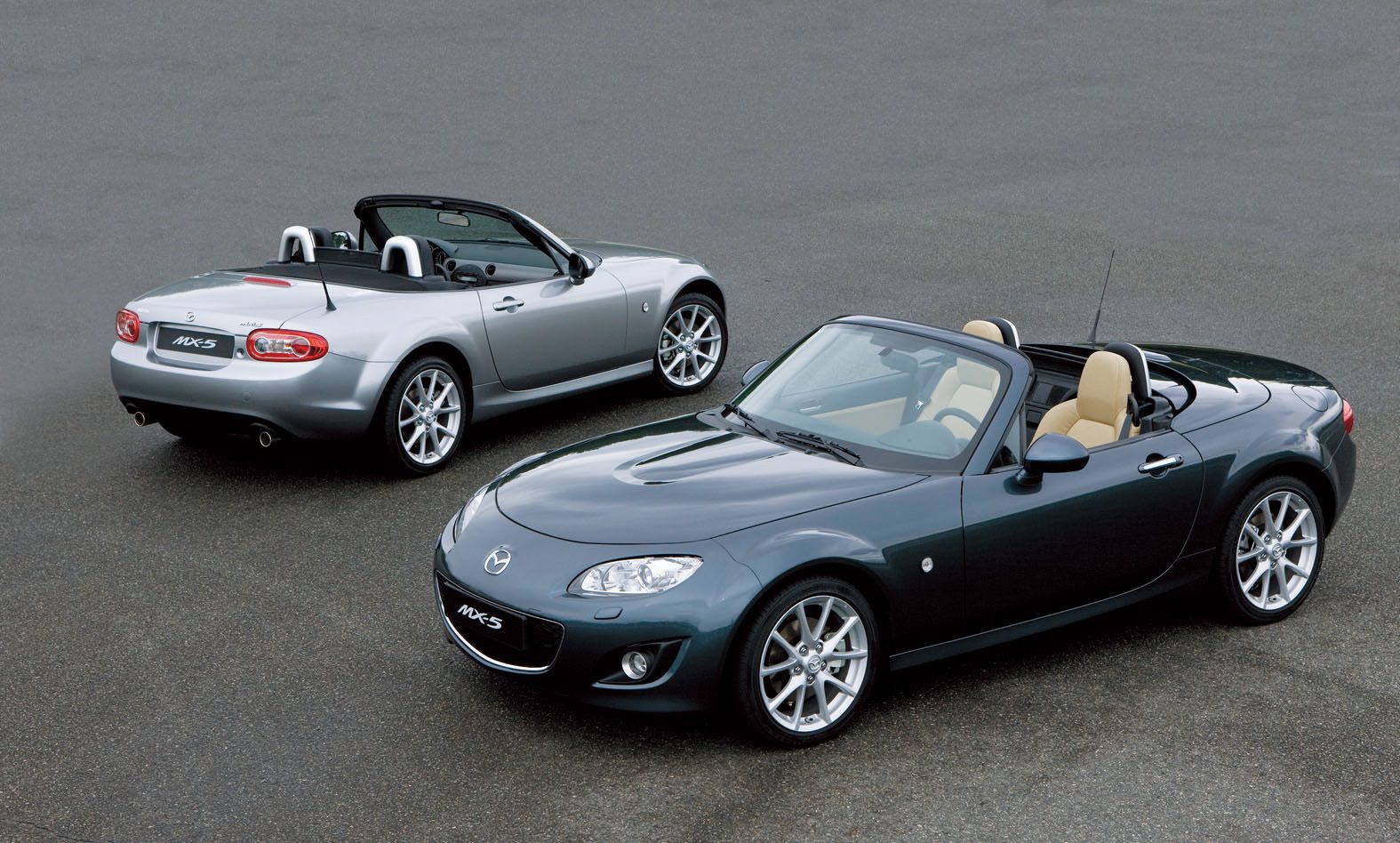
In the ancient ages before hot hatches reigned over the streets, roadsters were go-to cars for young enthusiasts on a budget. Unfortunately, roadsters were also unreliable, prone to rust, and were losing ground to the previously-mentioned front wheel drive pocket rockets. But then, in 1989, came the Mazda Miata, a savior car for kids looking for their ticket to the roadster experience.
The Miata took the best from the British roadsters like MG B and ironed out their flaws, captivating the hearts of enthusiasts all around the globe. In addition to selling like hotcakes, the Miata excelled on the secondhand market too, becoming a perfect entry level car for enthusiasts who wanted anything from a fun weekend car to a contender in a legitimate racing series.
While there are other brilliant Japanese roadsters like the Honda’s S600, S800 and S2000, or the Toyota MR2, it was Mazda that had the greatest impact in keeping roadsters alive, making the Miata one of our all-time greats.
#9: Toyota GR Yaris
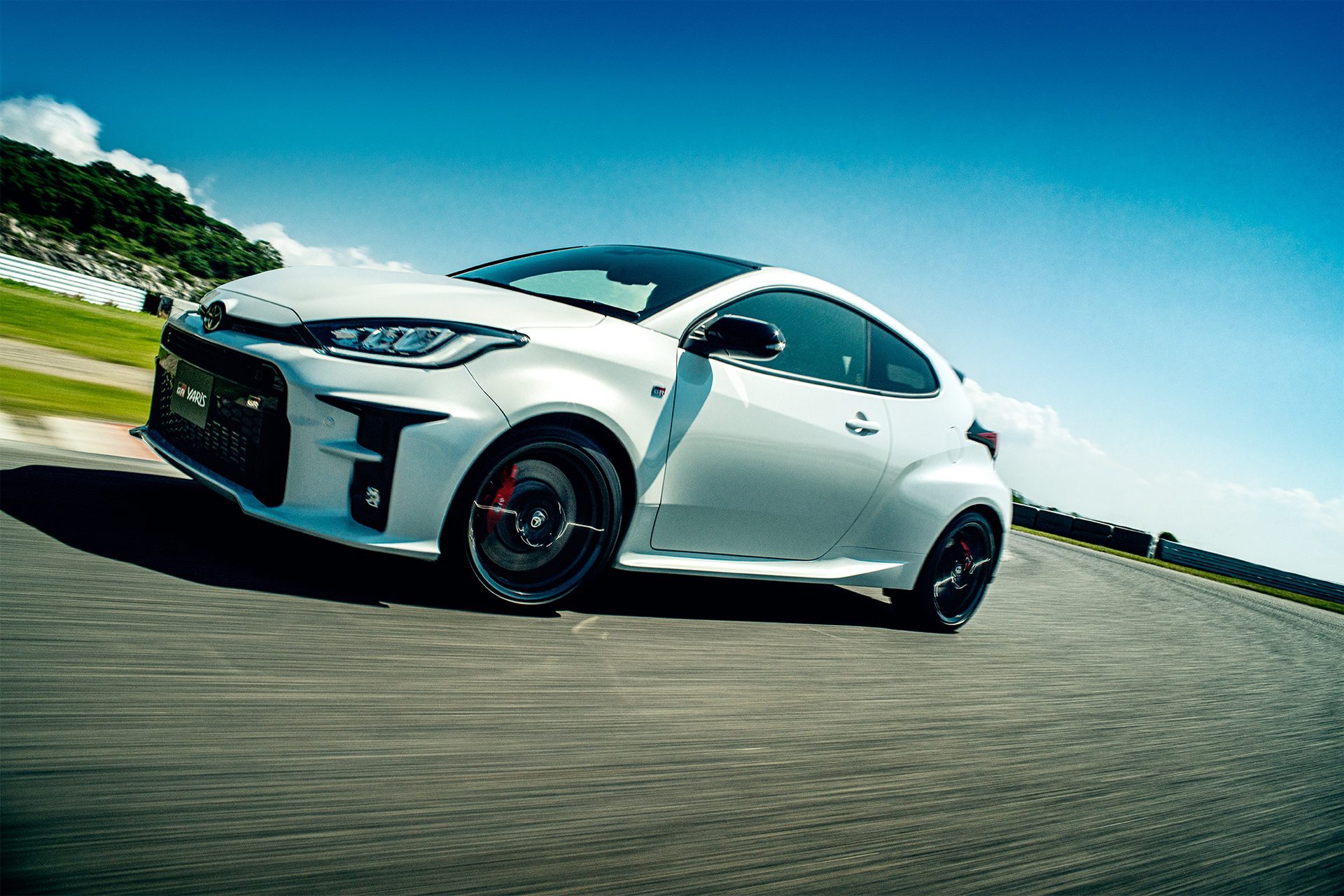
As absurd as it might sound, the penultimate car on the list is the most exciting three-cylinder sports car money can buy. Thanks to pure genius engineering that went behind it, the Toyota GR Yaris shows us that downsizing can bring tons of fun when properly executed. This WRC homologation special is a hot hatchback like no other, packing a 256-horsepower turbocharged inline-three in a subcompact body, but that’s only a tip of the iceberg.
Digging deeper, the GR Yaris is more than just a hot hatch. From afar, it does look like its namesake commuter, but it’s anything but. Its chassis is a chimera of a Yaris and a Corolla, and it sports carbon fiber roof and aluminum body panels to both shed weight and bring its center of gravity closer to the ground.
The 4-wheel drive itself lets you distribute torque either 60:40, 30:70, or 50:50, and there’s only a 6-speed manual. Gazoo Racing set a high benchmark for the competition by creating the best compact sports car we’ve seen in years and words can’t do it justice—so if you have any chance to experience it, make sure that you do!
#10: Lexus LFA
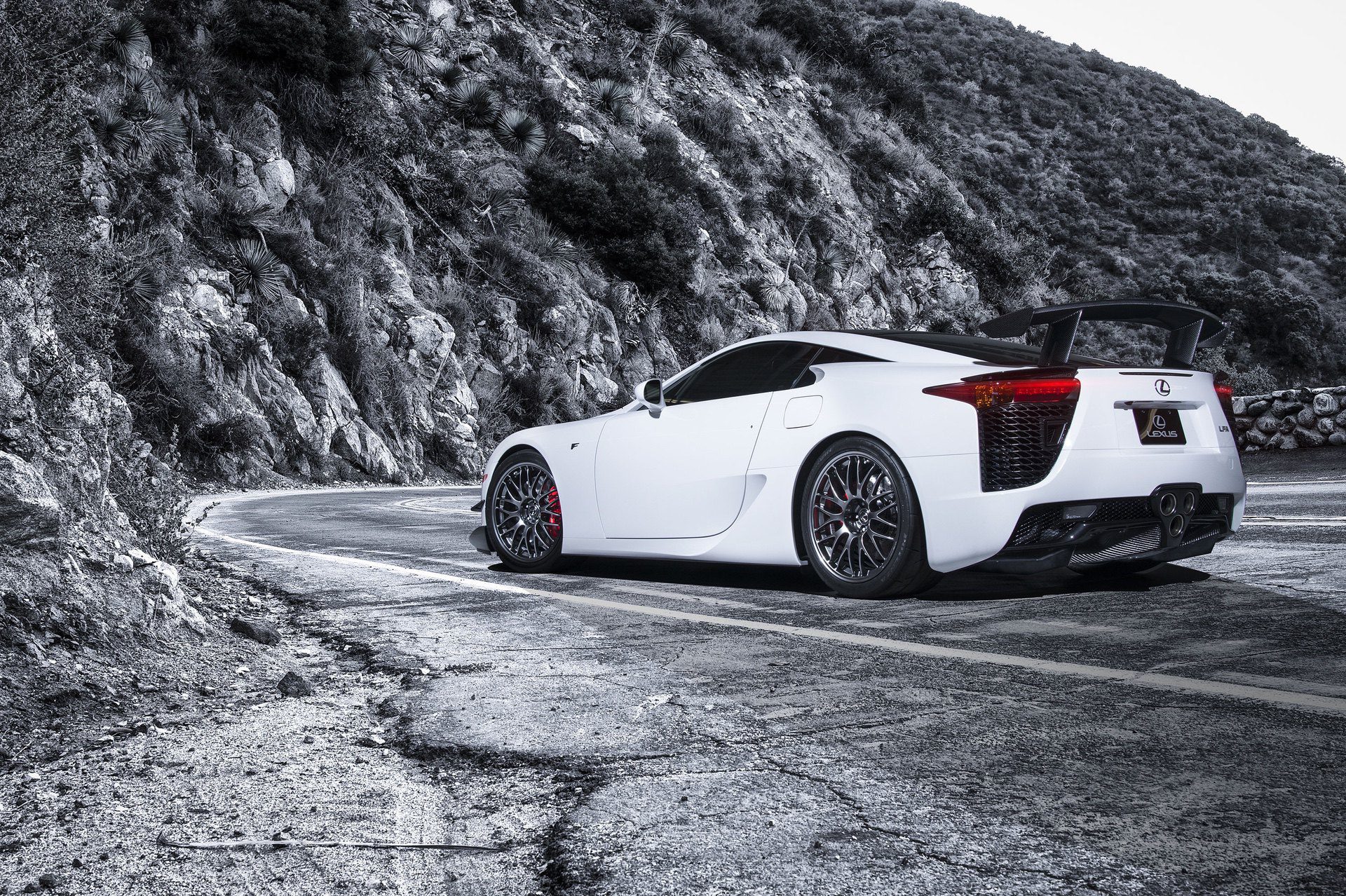
A very distant relative and a spiritual successor to the first car on the list, the Lexus LFA was a 21st century rendition of a highly exclusive front-engined Toyota sports car. The V10-powered supercar stands among the greatest modern supercars despite the fact that it was a slow seller with some examples remaining unsold way beyond the car’s production span.
Without any doubt, the LFA is an absolute pinnacle of modern day Japanese performance: a sophisticated and over-engineered machine. It’s high-tech in every aspect, from its bespoke CFRP tub and ultra-lightweight, eco-friendly 9,000 RPM Yamaha V10 all the way to its tunable exhaust symphony.
In recent years, the collector market has responded to the LFA accordingly, bringing it the recognition it deserved from the very beginning. Without any doubt, the Lexus LFA is one of the greatest cars of this century, and the future will show just how important it was for shaping the modern automotive world.
#11: Nissan R35 GT-R Nismo

So far the ultimate car from what was once known as the Skyline range, the standalone Nissan GT-R R35 instantly gained the reputation of a supercar killer when it premiered in 2007. A lot had to do with its highly tunable twin-turbocharged V6 and elaborate, highly effective ATTESA E-TS all-wheel drive system, but there was even more than that to appreciate.
Over the years, Nissan has been evolving the original concept, taking it to new heights via various upgrades to the base model, as well as by introducing various special editions. The greatest of them all is the latest Nismo-tuned, track-focused monster of a sports car (pictured above).
Nissan’s performance division not only amped up the twin-turbo V6 to push 600 horsepower and revised all the internals, but also employed extensive weight-saving techniques. The result? A claimed 0-60 sprint of 2.5 seconds, 205 mph top speed, and physics-defying on-track performance.
#12: Acura NSX Type S

A farewell edition to the modern-day NSX, the Acura NSX Type S brought a set of upgrades to Acura’s hybrid halo supercar. In its original form, the second generation Acura NSX boasted a 3.5-liter twin-turbocharged V6 coupled with three electric motors—and as such, it was a phenomenal sports car, worthy of its legendary name and the philosophy it brought alongside.
On the other hand, the NSX Type S got a 27-horsepower bump to 600 hp and 492 lb-ft of torque, a complete internal overhaul, and was limited to just 350 units worldwide. The upgrades naturally reflected onto the car’s performance in the straight line and around the tracks alike.
Thanks to a bump in power and revised 9-speed gearbox settings, the NSX Type S can cover the 0-60 mph sprint in mere 2.9 seconds and attain a top speed of 191 miles per hour.
#13: Toyota GT-One
The mid-to-late 1990s brought us some of the wildest homologation specials of all time, all thanks to the short lived GT1 class. Alongside the legendary McLaren F1 GTR, the Porsche GT1 and the Mercedes-Benz CLK GTR, Japan too had its fair share of race cars tamed for the road and one of them was the Toyota GT-One.
Looking like an actual Le Mans prototype rather than a GT1 silhouette racer, the Toyota GT-One was cunningly built in two roadgoing examples to comply with the class rules, hence its place on the list. It had a 592-horsepower twin-turbocharged 3.6-liter V8 sourced from Toyota’s Group C efforts and as estimated, it could push the car from a standstill to 60 mph in 3.2 seconds and up to 231 mph at top speed.
#14: Yamaha OX99-11
Yamaha is known for building quite a lot: a wide array of musical instruments and components, superfast motorbikes and phenomenal engines, yet they’re hardly remembered as an automobile manufacturer—despite building one of the fastest Japanese cars ever back in 1992. This car sadly never got out of the prototype phase with only three examples built, but it deserves a place on our list because it was outright amazing in all its weirdness.
The car in question is the Yamaha OX99-11, a fighter-jet styled tandem two-seater powered by OX99, a naturally aspirated 3.5-liter 70° V12 revving up to 10,000 RPM. The V12 produced 400 horsepower, was mated to 6-speed manual transmission, and was nested midship into a Formula 1-inspired carbon fiber monocoque chassis.
Thanks to its low weight, supreme aerodynamics and a potent engine, the Yamaha OX99-11 posted a 0-60 mph sprint of 3.2 seconds with a top speed of 217 mph.
#15: Mitsubishi Lancer EVO VIII MR FQ-400

In its baseline trims, the Mitsubishi Lancer is a reasonable, but also rather bland and forgettable midsize family sedan. The Lancer EVO, on the other hand, is both a rally and a street legend, an omnipotent supercar slayer and one of the brand’s most revered products. And then there’s the FQ.
Short for F***ing Quick, Lancer EVO FQ cars came straight out of Mitsubishi’s skunkworks and were all given a very special treatment, pushing the boundaries of their respective platforms to the maximum. The ultimate FQ Lancer was the 2005 EVO VIII MR FQ-400, the fastest sports sedan of its era, built by Mitsubishi UK to celebrate three decades on the British market.
As its name suggests, the Lancer EVO X FQ-400 produced 400 horsepower (405 to be precise) and 335 lb-ft of torque out of a 2.0-liter turbocharged inline-four. Moreover, the FQ-400 was lightened, which all amounted to mind-bendingly fast results.
The 0-60 sprint took just 3.4 seconds, which made it a quicker sprinter than many contemporary supercars. The 175 mph all-wheel drive supersedan was limited to 100 pieces and is one of the most collectible Mitsubishis today.
#16 Lexus LFA Nurburgring Edition

One of Japan’s rare supercars, the Lexus LFA is also one of the most underrated high-performance cars ever created. A front-engined, V10-powered creation, the LFA had been brewing since the mid-2000s, yet it commenced production in 2010. Lexus built it for just two years and in only 500 copies, but despite highly limited supply and unanimous love from the press, the last example sold in 2020.
During the production run, Lexus produced the LFA in two trims: the standard and the track-tuned Nürburgring edition. In the more distilled trim, the Lexus LFA boasts 563 hp from the odd-firing 72° Yamaha V10, ten more than the standard LFA, and it also benefits from quicker transmission calibration, as well as revised suspension, improved aerodynamics and lighter wheels.
Thanks to these improvements, the LFA Nürburgring Package could sprint from 0 to 60 mph in 3.6 seconds, and more importantly, it set the production car record at the eponymous track, lapping it in 7:14.64.
#17: Nissan R390 GT1

Nissan’s entry to the fabled GT1 class was built in cooperation with Tom Walkinshaw Racing, wherein the famous British outfit provided extensive assistance with chassis and aerodynamics, while Nissan equipped it with a Group C-rooted twin-turbocharged 3.5-liter V8 codenamed VRH35L. During its active days in 1997 and 1998, the R390 struggled with many issues despite being a competent car. Still, it managed to score a third place overall at the 1998 24 Hours of Le Mans before turning out obsolete for the 1999 season.
Before developing the R390 race car, Nissan and TWR built only one roadgoing example, originally painted red and later aerodynamically revised to longtail configuration and painted in Nissan’s signature dark blue. It boasted the same engine tuned to produce 550 hp and 470 lb-ft of torque.
The V6 was mated to a six-speed sequential manual transmission which sent the torque to the rear wheels. Nissan claimed that the R390 could do 0 to 60 mph in 3.8 seconds with a top speed of 220 mph, although that claim remained a matter of theory as the car was never officially tested for Vmax.
#19: Toyota GR Supra

The fifth generation Supra debuted in 2019 as a joint venture between BMW and Toyota, more precisely the performance-focused GR division. Unlike the legendary Mark IV Supra though, the marque’s latest iteration is a nimble sports car rather than a Japanese take on a Grand Tourer. We bet you already know enough about the Supra, so here’s a quick reminder about the more powerful of two versions, which is also one of ten quickest Japanese cars of all time.
The GR Supra is powered by a BMW-sourced B58 3.0-liter inline-six producing 335 horsepower and 365 lb-ft of torque distributed to the rear axle via ZF 8-speed automatic transmission. The lively engine provides a quick 0-60 sprint of 3.9 seconds while the top speed is limited to 155 mph.
#20: Nissan Z Coupé

The latest car from the dynasty tracing back to 1969 is a beautiful retro styled fastback coupé paying homage to the progenitor, an absolute icon, and one of the most important Japanese sports cars ever created, the Nissan Fairlady Z.
For the first time ever in a Z Series car, the Z Coupé relies on forced induction, sporting a 3.0-liter twin-turbocharged V6 producing 400 horsepower and 350 lb-ft of torque. Nissan offers the retromodern sports car with both 9-speed automatic and 6-speed manual transmission, and the former posts faster acceleration times, namely 4 seconds from 0 to 60. In addition to sprinting in the straight line, the Z Coupé promises to be one of the greatest drivers’ cars, especially in the three-pedal purists’ spec.


